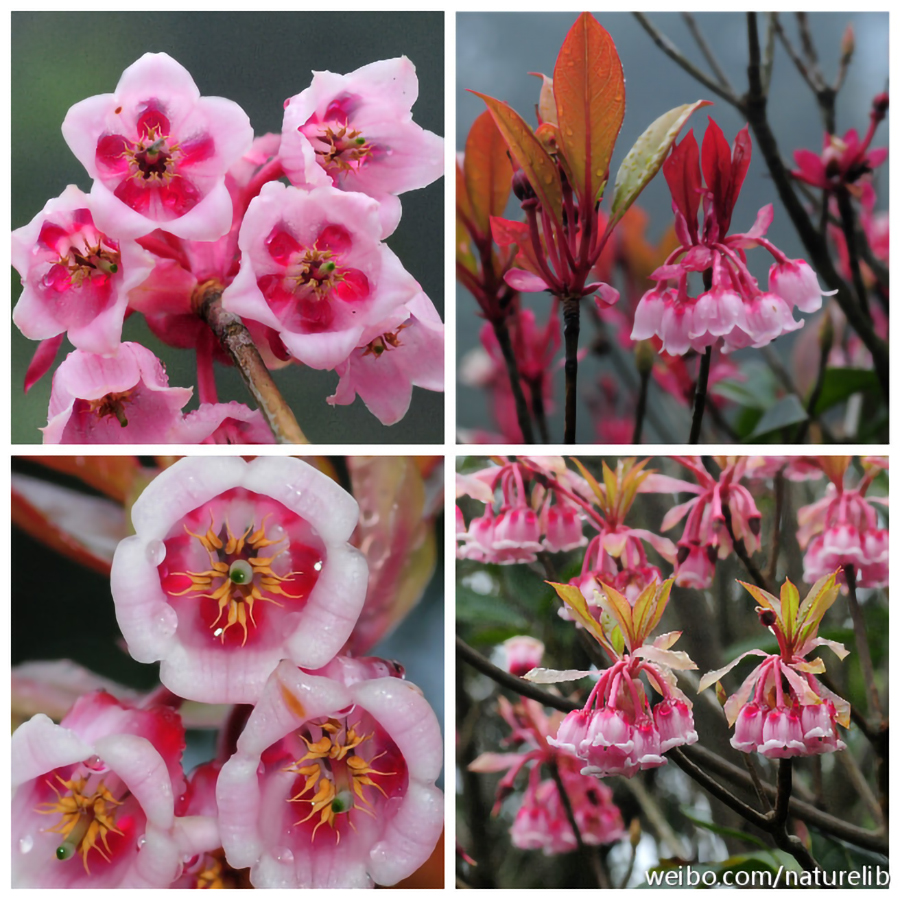- Scientific Name: Enkianthus quinqueflorus Loureiro
- Ref: Fl. Cochinch. 1: 277. 1790.
- Chinese Common Name: 吊钟花 diàozhōnghuā
- Family: Ericaceae
- Genus: Enkianthus
- Distribution: Mixed forests, hillsides, dry places; 600–1500(–2400) m. Fujian, Guangdong, Guangxi, Guizhou, Hainan, Hubei, Hunan, Jiangxi, Sichuan, Yunnan [Vietnam].
Shrubs or small trees, deciduous, 1–3(–10) m tall. Twigs glabrous. Leaf petiole 0.5–1.5 cm, glabrous; leaf blade elliptic, elliptic-lanceolate, or obovate-lanceolate, rarely lanceolate, 5–15 × 1.6–5 cm, leathery, glabrous, midvein abaxially raised, adaxially ± flat, secondary and fine veins distinctly raised on both surfaces, base cuneate, margin entire, sometimes sparsely sinuolate-serrulate towards apex, apex acuminate or shortly abruptly acuminate. Inflorescence umbellate, 3–8-flowered. Pedicel 1–2 cm, glabrous. Calyx glabrous; lobes ovate-lanceolate or triangular-lanceolate, 2–3 mm. Corolla pink, red, or white, broadly campanulate, 0.8–1.2 cm; lobes recurved, triangular-ovate. Stamens ca. 4 mm; filaments pubescent. Ovary glabrous or densely pubescent. Capsule 5-angled, 7–12 mm; stalk erect, 2–3.5 mm. Fl. Jan–Jun, fr. Mar–Sep. (Flora of China)


